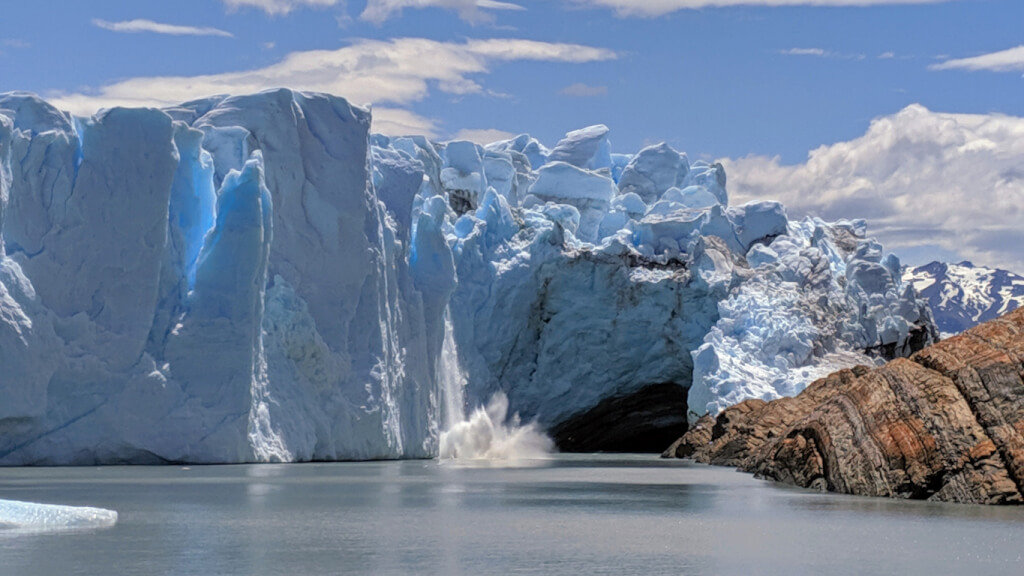Time bomb: 'Doomsday Glacier' starts to melt much faster than expected
Scientists say the so-called "Doomsday Glacier" in Antarctica, nicknamed because of the high risk of collapse and the threat of rising sea levels, could melt rapidly in the coming years, reports CNN.

Photo: IStock
The Thwaites Glacier, capable of raising world sea levels by half a meter, is collapsing along its underwater base as the planet warms. In a study published Monday in the journal Nature Geoscience, scientists mapped the glacier's historical changes, hoping to learn from its past what the glacier is likely to do in the future.
On the subject: Races will fade away: what the world and people will look like in 2050
This rapid decay may have occurred "as late as the middle of the 20th century," Alastair Graham, lead author of the study and a marine geophysicist at the University of South Florida, said in a press release.
They found that at some point in the past two centuries, the base of the glacier had moved away from the seafloor and was melting at a rate of 2,1 kilometers per year. This is double the rate that scientists have observed over the past decade or so.
This suggests that Thwaites has the potential for rapid destruction in the near future once he retreats behind the seabed ridge that helps keep him in check.
“Thwaites is really holding on to the last of its strength today, and we should expect big changes on small time scales in the future – even from year to year – as the glacier retreats behind a shallow ridge in its bed,” says Robert Larter, a marine geophysicist and one of the study co-authors from the British Antarctic Survey.
Thwaites Glacier, located in West Antarctica, is one of the widest on Earth and larger than the state of Florida. But that's just part of the West Antarctic Ice Sheet, which NASA says contains enough ice to raise global sea levels by nearly 5 meters.
As the climate crisis has accelerated, the region is under close scrutiny due to the rapid melting of glaciers.
The Thwaites Glacier itself has troubled scientists for decades. As early as 1973, researchers wondered if there was a high risk of collapse. Nearly a decade later, they discovered that because the glacier is adjacent to the seafloor rather than land, warm ocean currents can melt the glacier from below, causing it to destabilize.
It is because of this study that scientists began to call the region around Thwaites "the weak underside of the West Antarctic ice sheet."
In the 21st century, researchers have begun to document Thwaites' rapid melting in a disturbing series of studies.
In 2001, satellite data showed that the ground line was melting at about 1 km per year. In 2020, scientists found evidence that warm water was indeed flowing over the base of the glacier, melting it from underneath.
And then, in 2021, a study showed that the Thwaites Ice Shelf, which helps stabilize the glacier and keep the ice from flowing freely into the ocean, could collapse within five years.
“According to satellite data, we see that these large cracks are spreading across the surface of the ice shelf, significantly weakening the ice fabric; it's a bit like a crack in a windshield,” said Peter Davies, an oceanographer with the British Antarctic Survey. “Cracks are slowly spreading across the ice shelf, and eventually it will break into many different pieces.”
You may be interested in: top New York news, stories of our immigrants, and helpful tips about life in the Big Apple - read it all on ForumDaily New York.
The Sept. 5 findings, which suggest that Thwaites could be melting much faster than recently thought, were documented in a 20-hour mission that mapped an underwater area the size of Houston, according to a press release.
Graham said the study "has been a truly unique mission in a lifetime" but the team hopes to return soon to collect samples from the seafloor so they can determine when the previous rapid melt occurred. This could help scientists predict future changes in the Doomsday Glacier, which scientists previously thought would melt slowly. But according to Graham, this study refutes such optimistic predictions.
Read also on ForumDaily:
Five US national parks to see in the fall
Hell on Earth: Death Valley sets new heat record
Subscribe to ForumDaily on Google NewsDo you want more important and interesting news about life in the USA and immigration to America? — support us donate! Also subscribe to our page Facebook. Select the “Priority in display” option and read us first. Also, don't forget to subscribe to our РєР ° РЅР ° Р »РІ Telegram and Instagram- there is a lot of interesting things there. And join thousands of readers ForumDaily New York — there you will find a lot of interesting and positive information about life in the metropolis.











